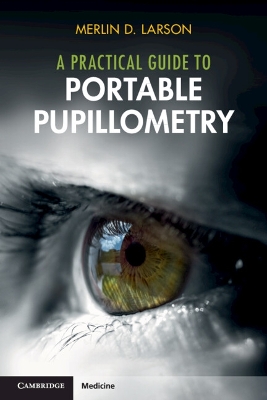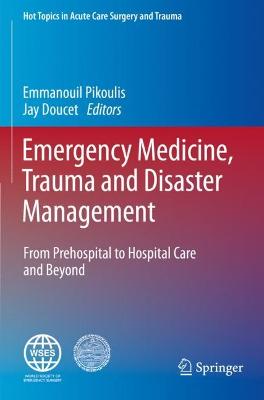Operational and Medical Management of Explosive and Blast Incidents
 portes grátis
portes grátis
Operational and Medical Management of Explosive and Blast Incidents
Callaway, David W.; Burstein, Jonathan L.
Springer Nature Switzerland AG
07/2020
641
Dura
Inglês
9783030406547
15 a 20 dias
1154
Descrição não disponível.
Part I. Introduction.- Chapter 1. Scope and Scale of the Problem.- Chapter 2. Blast Physics and Biophysics.- Chapter 3. State of the Science - Blast Injury Pathophysiology.- Chapter 4. Operational Considerations: Review of Contemporary Data.- Chapter 5. Civilian Hospital and Healthcare System Preparedness (Location, Preparedness, Epidemiology Review of Data).- Chapter 6. Military Trauma System Response to Blast MCI.- Chapter 7. The Modern Explosive Threat: Improvised Explosive Devices.- Chapter 8. Interagency Collaboration and Maturation - The United Kingdom Experience.- Chapter 9. Case Study: The Madrid Train Bombing of March 11, 2004 Part II. Prehospital Management.- Chapter 10. Scope of the Problem and Operational Considerations.- Chapter 11. Lessons in Prehospital Trauma Management During Combat.- Chapter 12. First Responders: Clinical Care of Blast Trauma in the Prehospital Setting.- Chapter 13. The Explosive Mass Casualty: Prehospital Incident Management and Triage.-Chapter 14. Transporting Blast-Injured Patients.- Chapter 15. Risk-Related Zones of Prehospital Operations.- Chapter 16. Tactical Emergency Medical Support (TEMS).- Chapter 17. Case Study: Ptimary Blast Injury in a Field Setting.- Chapter 18. Case Study: 2013 Boston Marathon.- Part III. Emergency Department.- Chapter 19. Emergency Department Response to Explosive Incidents: Scope of the Problem and Operational Considerations.- Chapter 20. Emergency Medicine: Combat Lessons Learned.- Chapter 21. First Receivers: Managing Blast Injuries upon Hospital Arrival.- Chapter 22. The Role of Blood Products in Damage Control Resuscitation in Explosion-Related Trauma.- Chapter 23. Pediatric Considerations.- Chapter 24. Organization, Operations, Management, and Their Role in Surge Capacity and Mass Casualty Incidents.- Chapter 25. Case Study: Emergency Department Response to the Boston Marathon Bombing.- Chapter 26. Case Study: Management of Blast Incidents in Israel.- Part IV. Surgical Management.- Chapter 27. Scope of the Problem and Operational Considerations: Logistics, Surge Capacity, Organizing a Response, Sustainment Issues, Resource Utilization.- Chapter 28. Combat Lessons Learned.- Chapter 29. Damage Control Surgery.- Chapter 30. Anesthesia Care in Blast Injury.- Chapter 31. Vascular Injuries.- Chapter 32. Management of Thoracoabdominal Blast Injuries.- Chapter 33. Genitourinary Injuries.- Chapter 34. Management of Orthopaedic Blast Injuries.- Chapter 35. Reconstructive Plastic Surgery in Blast and Burn Injuries.- Chapter 36. Pediatric Blast Injuries.- Chapter 37. Case Study: Boston Bombings, a Surgeon's View.- Part V. ICU Management.- Chapter 38. ICU Management of Blast Victims: Scope of the Problem and Operational Considerations.- Chapter 39. Ventilator Strategies.- Chapter 40. ICU Management: Extended Resuscitation Considerations.- Chapter 41. Case Study from Afghanistan: Dismounted Complex Blast Injury.- Part VI. Special Considerations.-Chapter 42. Chemical, Biological, Radiological, or Nuclear Event (CBRNE): Prehospital and Hospital Management.- Chapter 43. Burn Management.- Chapter 44. Wound Management.- Chapter 45. Psychological Consequences: Responders and Community.
Este título pertence ao(s) assunto(s) indicados(s). Para ver outros títulos clique no assunto desejado.
Explosive and blast incidents;Medical management of blast injuries;Medical management of traumatic injuries;Operational and medical management of disasters;Rehabilitation of blast injuries;Surgical treatment of blast injuries;Terrorism and medical emergencies;Triage and blast injuries;Trauma Surgery
Part I. Introduction.- Chapter 1. Scope and Scale of the Problem.- Chapter 2. Blast Physics and Biophysics.- Chapter 3. State of the Science - Blast Injury Pathophysiology.- Chapter 4. Operational Considerations: Review of Contemporary Data.- Chapter 5. Civilian Hospital and Healthcare System Preparedness (Location, Preparedness, Epidemiology Review of Data).- Chapter 6. Military Trauma System Response to Blast MCI.- Chapter 7. The Modern Explosive Threat: Improvised Explosive Devices.- Chapter 8. Interagency Collaboration and Maturation - The United Kingdom Experience.- Chapter 9. Case Study: The Madrid Train Bombing of March 11, 2004 Part II. Prehospital Management.- Chapter 10. Scope of the Problem and Operational Considerations.- Chapter 11. Lessons in Prehospital Trauma Management During Combat.- Chapter 12. First Responders: Clinical Care of Blast Trauma in the Prehospital Setting.- Chapter 13. The Explosive Mass Casualty: Prehospital Incident Management and Triage.-Chapter 14. Transporting Blast-Injured Patients.- Chapter 15. Risk-Related Zones of Prehospital Operations.- Chapter 16. Tactical Emergency Medical Support (TEMS).- Chapter 17. Case Study: Ptimary Blast Injury in a Field Setting.- Chapter 18. Case Study: 2013 Boston Marathon.- Part III. Emergency Department.- Chapter 19. Emergency Department Response to Explosive Incidents: Scope of the Problem and Operational Considerations.- Chapter 20. Emergency Medicine: Combat Lessons Learned.- Chapter 21. First Receivers: Managing Blast Injuries upon Hospital Arrival.- Chapter 22. The Role of Blood Products in Damage Control Resuscitation in Explosion-Related Trauma.- Chapter 23. Pediatric Considerations.- Chapter 24. Organization, Operations, Management, and Their Role in Surge Capacity and Mass Casualty Incidents.- Chapter 25. Case Study: Emergency Department Response to the Boston Marathon Bombing.- Chapter 26. Case Study: Management of Blast Incidents in Israel.- Part IV. Surgical Management.- Chapter 27. Scope of the Problem and Operational Considerations: Logistics, Surge Capacity, Organizing a Response, Sustainment Issues, Resource Utilization.- Chapter 28. Combat Lessons Learned.- Chapter 29. Damage Control Surgery.- Chapter 30. Anesthesia Care in Blast Injury.- Chapter 31. Vascular Injuries.- Chapter 32. Management of Thoracoabdominal Blast Injuries.- Chapter 33. Genitourinary Injuries.- Chapter 34. Management of Orthopaedic Blast Injuries.- Chapter 35. Reconstructive Plastic Surgery in Blast and Burn Injuries.- Chapter 36. Pediatric Blast Injuries.- Chapter 37. Case Study: Boston Bombings, a Surgeon's View.- Part V. ICU Management.- Chapter 38. ICU Management of Blast Victims: Scope of the Problem and Operational Considerations.- Chapter 39. Ventilator Strategies.- Chapter 40. ICU Management: Extended Resuscitation Considerations.- Chapter 41. Case Study from Afghanistan: Dismounted Complex Blast Injury.- Part VI. Special Considerations.-Chapter 42. Chemical, Biological, Radiological, or Nuclear Event (CBRNE): Prehospital and Hospital Management.- Chapter 43. Burn Management.- Chapter 44. Wound Management.- Chapter 45. Psychological Consequences: Responders and Community.
Este título pertence ao(s) assunto(s) indicados(s). Para ver outros títulos clique no assunto desejado.
Explosive and blast incidents;Medical management of blast injuries;Medical management of traumatic injuries;Operational and medical management of disasters;Rehabilitation of blast injuries;Surgical treatment of blast injuries;Terrorism and medical emergencies;Triage and blast injuries;Trauma Surgery







